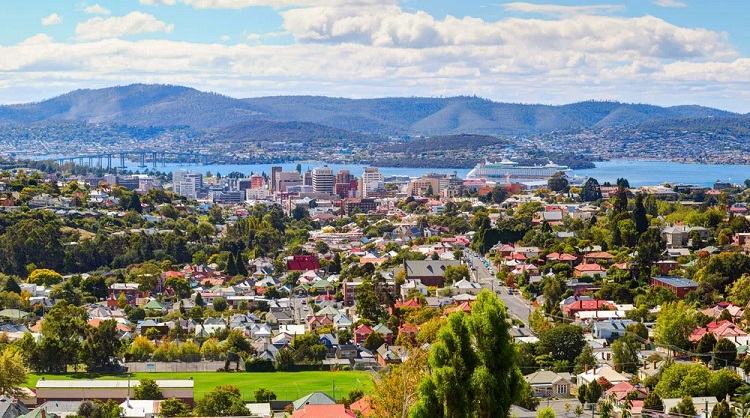
Hobart, the capital city of the Australian state of Tasmania, is a place rich in history and cultural significance. Situated on the southeastern coast of the island, Hobart has a fascinating past that dates back centuries. From its indigenous heritage to its colonial settlement and subsequent development, the city has evolved into a vibrant and thriving community. This article will explore the history of Hobart, tracing its origins, growth, and transformation into the modern city it is today.
Before European settlement, the area now known as Hobart was inhabited by the Mouheneener people, who were part of the larger Aboriginal group known as the Tasmanian Aboriginals. They had lived in the region for thousands of years, developing a deep connection to the land and establishing a rich cultural heritage. The Mouheneener people had a semi-nomadic lifestyle, utilising the area's abundant natural resources for sustenance and shelter. They hunted kangaroos, wallabies, and seals, fished in the Derwent River, and gathered seasonal plants and berries.
The first European to reach the shores of what is now Hobart was the Dutch explorer Abel Tasman, who sailed past in 1642. However, it wasn't until the late 18th century that British explorers and settlers arrived. In 1803, Lieutenant John Bowen established a short-lived penal settlement at Risdon Cove, just north of present-day Hobart. However, due to poor conditions and conflicts with the indigenous population, the settlement was relocated to the present site of Hobart in 1804. The new settlement was named Hobart Town after Lord Hobart, the British Colonial Secretary at the time.
In the early years of British settlement, Hobart Town served as a penal colony, housing convicts transported from Britain. The convicts were put to work constructing buildings, roads, and other infrastructure. Gradually, as free settlers arrived, the town began to develop into a more permanent settlement. The early 19th century saw the establishment of government buildings, churches, and schools. The construction of the Cascades Female Factory in 1828, a purpose-built institution for female convicts, reflected the changing nature of the settlement.
As the settlement grew, it became an important administrative and commercial centre. The Derwent River played a crucial role in the city's development, serving as a transportation hub for goods and people. The maritime industry flourished, and Hobart became a major port, facilitating trade with other Australian colonies and international markets. The whaling industry was also significant during this period, with many ships departing from Hobart in search of valuable whale oil.
The 19th century also witnessed significant social and cultural developments in Hobart. The Royal Society of Tasmania, founded in 1843, became a prominent intellectual and scientific institution. The establishment of the University of Tasmania in 1890 further enhanced Hobart's reputation as an educational centre. The city also witnessed the construction of grand buildings and monuments, such as the Hobart Town Hall, which still stand today as reminders of this period of prosperity.
In the late 19th and early 20th centuries, Hobart experienced a period of rapid growth and modernisation. The discovery of gold in the nearby town of Beaconsfield in 1877 led to an influx of people seeking their fortunes, stimulating economic activity in the region. The construction of railways, including the Derwent Valley Line, facilitated the transport of goods and boosted trade.During World War I, Hobart played a significant role as a naval base and staging point for the Australian Imperial Force. The city's infrastructure was further developed to support the war effort, including the construction of defence facilities and shipbuilding yards. The war also had a profound impact on the community, with many men enlisting in the armed forces and women taking on new roles in the workforce.
In the decades that followed, Hobart continued to grow and diversify. The city underwent urban renewal projects, and new suburbs were established to accommodate the expanding population. The post-war years also saw the emergence of manufacturing industries, including textiles, food processing, and engineering. Hobart became a centre for arts and culture, with the establishment of galleries, theatres, and cultural institutions.
In recent years, Hobart has gained recognition for its commitment to environmental sustainability and conservation. The city's unique natural surroundings, including the nearby Mount Wellington and the pristine waters of the Derwent River, have made it a popular destination for outdoor enthusiasts and nature lovers. Efforts have been made to protect and preserve these natural assets, promote eco-tourism, and raise awareness about environmental issues.
The cultural landscape of Hobart has also flourished, with the annual Dark Mofo festival attracting visitors from around the world. The event showcases contemporary art, music, and performances, transforming the city into a vibrant cultural hub. Additionally, the Museum of Old and New Art (MONA), opened in 2011, has become a major attraction, drawing art enthusiasts and tourists alike.
In conclusion, the history of Hobart is a testament to the resilience and adaptability of its inhabitants. From its indigenous heritage to its colonial past, the city has evolved and transformed into a thriving modern metropolis. Hobart's rich history, combined with its natural beauty and cultural vibrancy, make it a unique and captivating destination for visitors and residents alike.